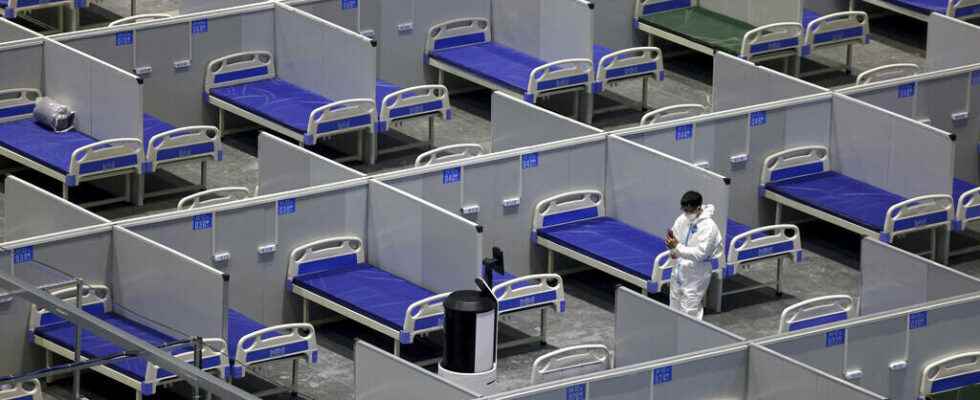On May 12, a virtual summit on the Covid pandemic is being held, co-chaired by the United States, Germany, which is currently at the head of the G7, Indonesia at the head of the G20, Senegal at the head of the African Union and Belize, at the head of Caricom (Caribbean countries). This is the second such meeting. The first took place last September at the initiative of US President Joe Biden, and the strengthening of vaccination in the world was one of the key topics. On the agenda for this session: still vaccination but also the implementation of means to get out of the acute phase of the pandemic; because it is not over, even if on a planetary scale it is receding. Update on the situation.
The pandemic is regressing particularly in Europe. The virus, in this case of the Omicron -BA.1 and especially BA.2- sub-lineages, continues to circulate actively but at a much lower level than it may have been a few weeks ago; and many countries have eased restrictions, such as wearing masks.
On a global scale, however, the situation is a bit mixed. So China is facing an epidemic, Shanghai residents are confined. For two years the country had been spared thanks to its Zero Covid strategy ; this is no longer the case, and the strong contagiousness of Omicron is in question. The situation facing the Middle Kingdom is “delicate”, says Arnaud Fontanet, director of the epidemiology of emerging diseases unit at the Institut Pasteur in Paris and professor at the National Conservatory of Arts and Crafts. According to him, ” the difficulty for China is that the level of vaccination of the elderly, the over 60s, and in particular the over 80s, is insufficient, and with vaccines of a slightly lower quality than messenger RNA vaccines; this is the locally manufactured Sinovac inactivated vaccine. If they let the virus circulate, they can have a very significant mortality. We saw it in Hong Kong in March 2022: when BA.2 passed there, they had a wave as deadly as the first wave that Europe experienced in March 2020, due to an insufficiently elderly population. vaccinated “, he underlines.
The situation of theSouth Africa is also closely followed by specialists, in particular because it could be that of other countries in the world in a few weeks or months. Two new sub-lineages of Omicron have been detected there,
BA.4 and BA.5, and cause a rebound. ” This new wave leads to a fairly significant increase in the number of cases, a less significant hospital impact which, specifies Professor Fontanet, does not necessarily reflect the fact that these sub-variants are less severe than the previous ones, but rather that they then arrive that there is an additional layer of population immunity, as South Africa had a fairly large BA.1 wave last December. As you accumulate infections or vaccine injections, you build up your immunity, especially against serious forms. “says the scientist.
► Read also : Vigilance remains required in the face of new sub-variants of Covid-19
As we can see, the pandemic is not over, and to limit its impact, vaccination is an important weapon. Globally, inequalities persist. In many rich countries, about 80% of the population is vaccinated while in low-income countries, about 15% has received at least one dose (in some countries, such as Chad or Cameroon, this rate is 5% , in the DRC less than 1% according to Africa CDC) despite the Covax device set up to help them; far from the WHO objective of reaching 70% of the population everywhere by July 2022.
However, for a few months, the absence of doses has no longer been an obstacle, points out Dr. Emmanuel Baron, director of Epicenter, the research and epidemiology group of the NGO Doctors Without Borders. ” Since the end of 2021, many vaccines have arrived, particularly in sub-Saharan Africa, sometimes in a somewhat chaotic way, with short expiry times. But the problem is more the ability to use them than the ability to have them, takes over Emmanuel Baron. To vaccinate, all the logistics must be in place, transport, storage, etc. and that’s a problem he notes. Another obstacle: the sometimes weak adhesion of the populations. ” The reasons are various: disinformation, but also quite simply the fact that the epidemic did not hit a large part of the population very brutally, because the population is very young in sub-Saharan Africa.. »
If we know today – through studies – that the coronavirus has circulated actively in sub-Saharan Africa, causing, as elsewhere, a significant excess mortality among the elderly (as well as very likely among the frail), the youth of the population explains why there have been fewer serious cases.
And voices are being heard, such as that of Emmanuel Baron, who question the WHO’s objective to vaccinate very widely regardless of the situation of the countries. “ This requires the mobilization of enormous resources, which are limited, a lot of personnel and energy, while these countries are confronted with other scourges, which have also worsened during the pandemic: malaria, tuberculosis, etc., emphasizes Emmanuel Baron, who pleads for the needs of these countries to be better taken into account. “In any case, it is certain that we must vaccinate fragile people against covid, and remain reactive, because the pandemic is not over. “, he concludes.
